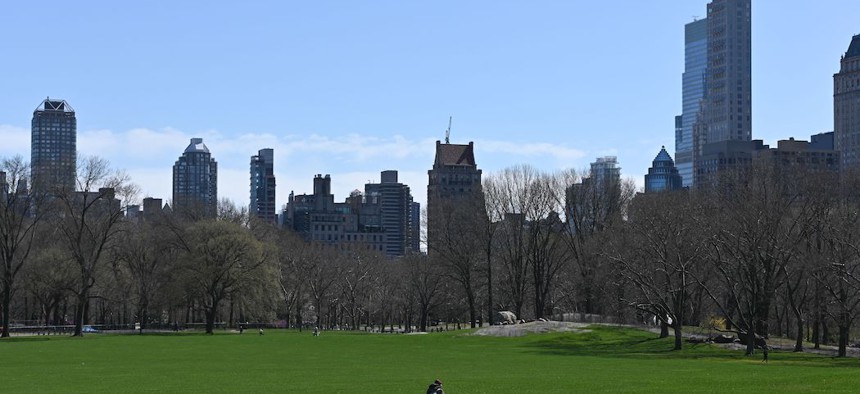Parks have become New Yorkers’ last refuge in this terrible time of pandemic, lockdown and looming recession. They are virtually the only places left where people of all ages can walk, get fresh air and sunlight, let their kids run and wave to their neighbors. We absolutely need to follow the orders issued by Gov. Andrew Cuomo to go outside only for essentials, but fresh air and exercise are essential to physical and mental health for many people. It is wise that the governor is keeping state parks open, and that New York City Mayor Bill de Blasio and most other municipal leaders have kept city, county and village parks open as well.
As confirmed cases of COVID-19 spike and reports of crowded parks proliferate, there is increasing pressure to close parks altogether. De Blasio said he would revisit whether parks should remain open this weekend.
Closing them would do more harm than good. A large body of research documents the positive impacts of nature on human flourishing – our social, psychological, and emotional life. More than 100 studies have shown that being in nature or living near nature can have positive impacts on our brains and bodies. New Yorkers need those soothing and regenerative effects more than ever right now.
Safe, accessible and accommodating green spaces are particularly vital in densely developed cities where residents don’t have spacious backyards. And, New York Times trend pieces notwithstanding, most New York City residents do not own second homes and they cannot decamp for the Catskills or the Hamptons.
But to ensure that we receive these benefits, we have to adapt to the realities of the new coronavirus. The irresponsible behavior of some park users – congregating in groups, playing soccer games, sharing sweaty equipment – should not imperil the appropriate park uses of so many in desperate need of the outdoors, nature and exercise.
State and city park departments throughout New York have rightfully decided to keep parks open but are closing indoor facilities, playgrounds, sports fields and basketball courts. They are encouraging appropriate uses such as walking, hiking, running and biking that can be managed with stricter social distancing. State and city park departments can improve signage or help welcome all and direct visitors to the right location, helping park visitors change and broaden the way they recreate –from a distance, of course.
But park users can and must practice appropriate social distancing, and until they do, parks will be pressured to close. There is plenty of room if we can just spread out.
Keeping the required distance of six feet from others can be challenging in the most heavily used sections, but can be done by following some simple rules. If you and your companion can touch each other’s fingertips with arms fully extended, you’re too close. When going through entrances or along pathways, go in single file and keep six feet behind the next person in front of you. Above all, don’t cluster in groups.
To make more use of underutilized park space in cities, there are many apps such as Avenza, All Trails and Oh Ranger that show the nearest parks and best routes and other neighborhood gems like Inwood Hill in Upper Manhattan and the new Shirley Chisholm State Park in East New York, Brooklyn.
And for those low-income communities of color who may lack access to parks – or find nearby parks are often dilapidated, small and uninviting because of significantly less public investment – we need to do more than just keep existing parks open. There are nearby state, municipal, school and university owned lands, some with extensive natural lands, all of which could be easily accessed and could be opened now, like Port Authority controlled-land, or universities like some of the CUNY campuses.
This will spread out use, avoid travel to parks and be more equitable for neighborhoods with none. And now that we truly begin to see and understand the importance of parks, these same open spaces should stay open and address the huge inequity of quality parkland distribution. This is not a novel idea. New York City long ago began converting parking lots to parks in communities of need, and many cities in the larger metropolitan area are considering doing the same.
When this crisis has receded, these parks will again serve the multi-faceted purposes they always do. The opportunity to move, play, and connect with nature in a park within an easy walk of home is a key part of combatting depression, heart disease, diabetes, asthma and obesity, on which we now spend $500 billion annually across the country. Well-designed parks can serve as natural and sustainable infrastructure for neighborhoods with abundant trees and porous surfaces that cool and filter air, provide shade, and filter and manage storm water for cities.
Right now, though, we need them more than ever to stay connected to nature and each other as we fight this unprecedented pandemic.
NEXT STORY: How de Blasio failed students in failing schools


